So, what do trains haul? Freight trains haul anything from consumer goods, specialized cargo, and hazardous items. Each kind of cargo also requires a specific category of freight cars.
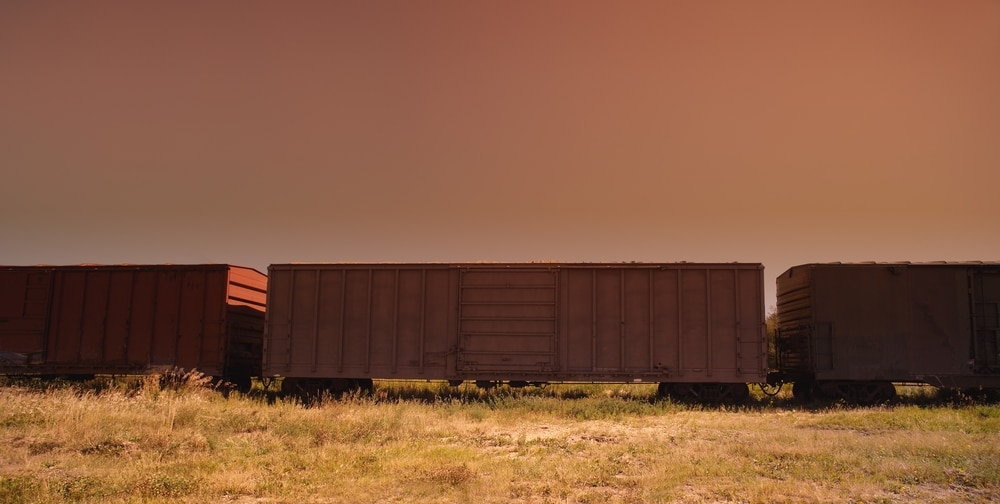
The freight train industry is so big at this point, that it’s impossible to live without it. America’s freight rail system is among the biggest in the world.
Freight trains travel through different states and even Canada and Mexico. It runs over 140,000 miles of trackage, transporting approximately 1.7 billion tons per year.
But do you ever wonder what do trains haul exactly?
Well, in a nutshell, trains carry anything and everything. From commodities and minerals to the food you find in grocery stores and even cars.
Let’s go through them one by one.
Top 11 Things That Trains Haul
You’re surely familiar with the different types of cars. There are sedans, pickup trucks, and vans.
And each person or company purchases a type that suits their needs, the same concept also applies to freight rail cars.
There is a wide range of rail cars, each of which is specifically designed for certain cargo or function.
Here’s a guide to each rail car type and the things that they haul.
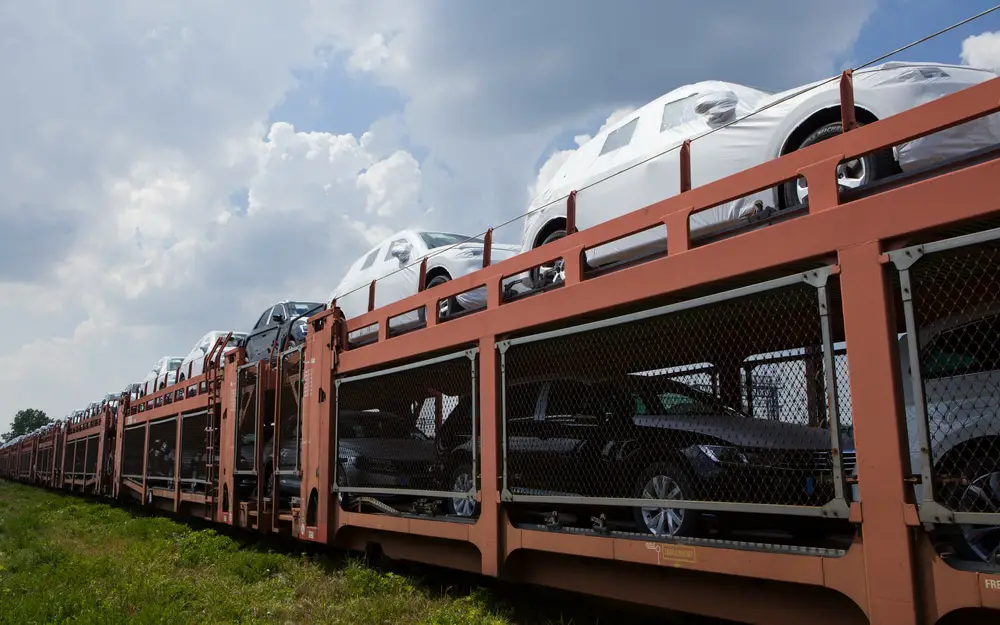
1. Autorack
The autotrack rail car hauls vehicles from manufacturers to their dealerships or retailers. These rail cars are built strong, with racks or decks inside that form levels.
The decks allow for more storage capacity. In this way, automobiles can pile on top of others during transit without damage.
It can transport just about any kind of automobile. This ranges from a sedan to a large cargo van.
There are also different types of autoracks intended to haul different vehicles:
- Automax
- Bi-level
- Tri-level
- Uni-level
Autoracks help manufacturers transport multiple automobiles at once. Some auto tracks can transport roughly 26 automobiles together.
In contrast, a general truck without a trailer can only transport around nine automobiles at once.
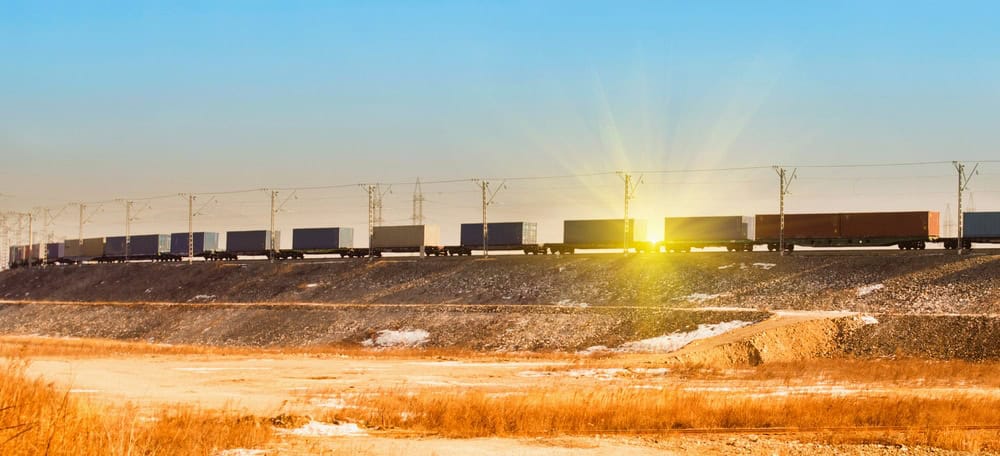
2. Boxcar
Boxcars are incredibly multifunctional and can haul almost all types of freight.
They carry anything from computers to newspapers and beyond.
A boxcar commonly hauls:
- Forestry
- Food
- Beverages
- Metal
- Construction materials
- Car parts
- Paper
- Agricultural goods
There are also refrigerated boxcars, which are also known as reefers. Reefers allow for transporting frozen food and other perishable goods.
Boxcars look like boxes, hence their name. They’re rectangular, fully enclosed, with sliding side doors or panels.
These rail cars also come in a variety of sizes, spanning from 50-70 feet. And quite often, a boxcar is the first thing that comes to mind when people think of rail cars.
It’s pretty much the standard image of a railroad car as it’s been heavily featured in movies and shows.
This is because the boxcar has been around since the 1830s. In fact, they’re one of the earliest forms of rail transport.
During its early years, boxcars were heavily used for hauling grain and coal. And it was a long and laborious process since people had to unload them manually.
Nowadays, mechanical equipment does the unloading for a more secure and efficient process. However, boxcars are not as heavily used today due to the rise of intermodal transport.
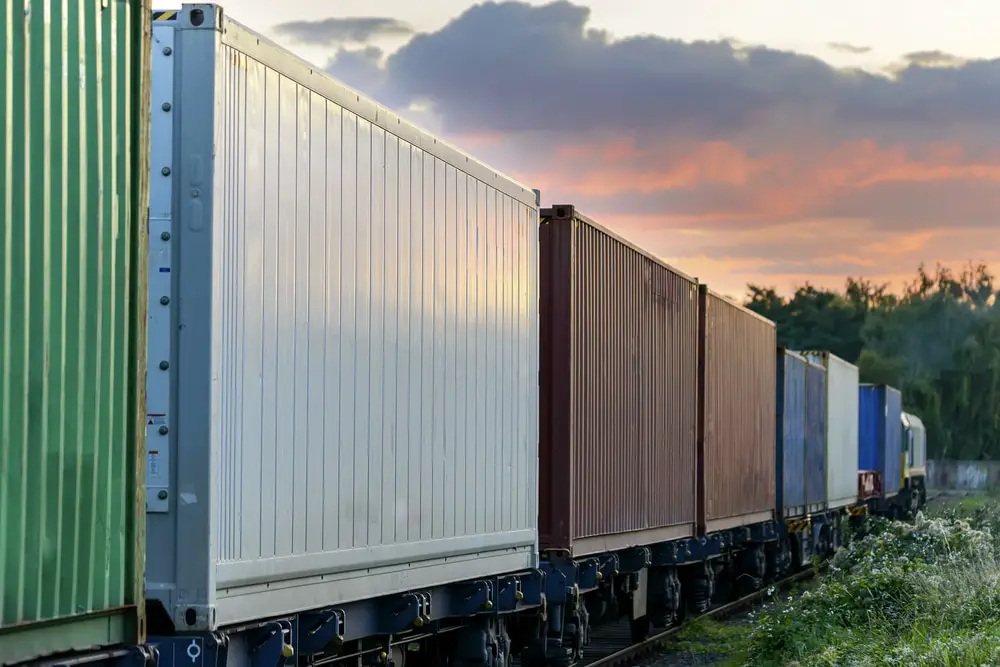
Intermodal refers to the bulk transportation of container cargo.
Nevertheless, boxcars are still used to haul commodities like paper and appliances.
3. Centerbeam
A center beam rail car carries construction materials which can include timber, lumber, wallboards, drywall, plywoods, and the like.
These rail cars are flatcars with a center beam or lengthwise I-beam.
This kind of structure maintains center-of-gravity. So this way, the transported items can attach to both sides.
Their length spans up to 73 feet and has a freight capacity of about 200 thousand pounds.
Centerbeans serve as a more cost-efficient alternative to trucking, as one train can haul the capacity of 200-300 trucks.
4. Covered Hopper
Covered hoppers carry bulk dry goods like grain, sand, cement, and more.
The covered hopper rail car was shortly introduced after the boxcar. It has similar protection that boxcars have. But, with more loading and unloading convenience.
They look similar to the usual hopper cars that you see, but without open tops. Instead, covered hoppers contain waterproof hatches.
Why do they need covers? Products transported in covered hoppers are more susceptible to damage or contamination.
Take dry cement for example. If dry cement gets wet with rain, it would lose its integrity. Another example is sugar. If sugar came into contact with dust, it would be contaminated.
This same concept goes for all the other goods transported in covered hoppers.
They also contains around two and four compartments (also known as “bays”) inside. These bays can be loaded or unloaded separately.
The amount of bays a rail car has during freight depends on the product’s weight. For instance, a covered hopper carrying heavier cargo has lesser bays.
There are also chutes or gates at the bottom for unloading the goods. And each bay connects to one chute.
Covered hoppers also come in different variations such as:
- Small-covered
- Large-covered
- Food-grade covered
A little fun fact from Union Pacific!
Did you know that one covered hopper can transport so much grain — enough to bake 200,000 loaves of bread?
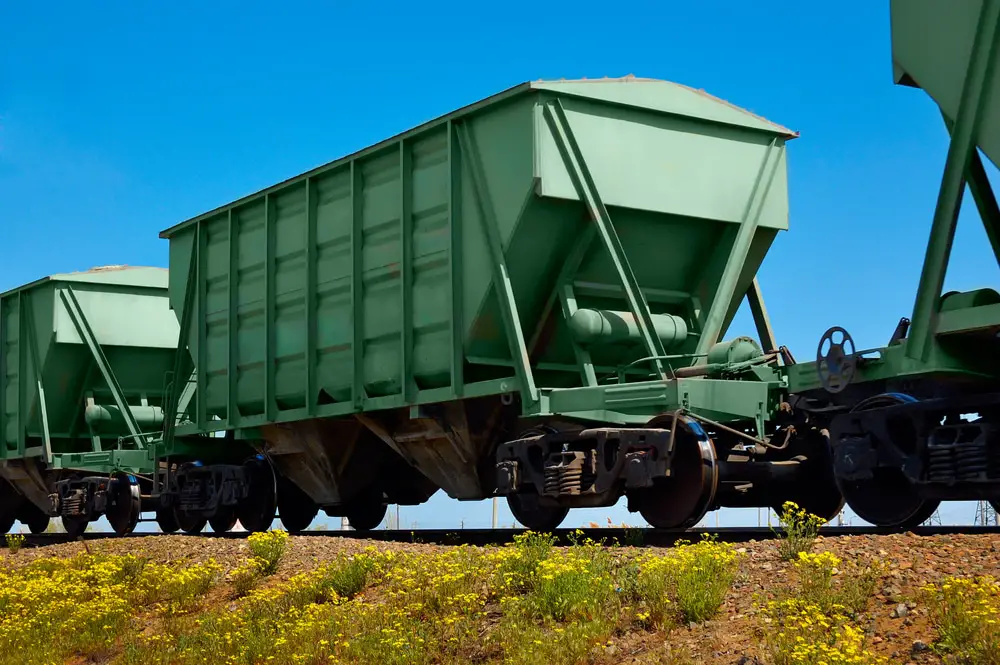
4. Coil Car
Coil cars haul rolled metal steel (also known as coiled steel). These materials are used to build just about anything metal we use daily. This includes the parts of your car, your gym locker, or even your cooking appliances.
These rail cars come in a range of dimensions, tonnages, and capacities to accommodate specific items.
For example, certain railcars are specifically made for preventing coils to roll and some models have side brackets for securing loads without wires.
Other coil cars also have special unloading and loading abilities. Most rolled steel is generally not susceptible to elements. Regardless, some coil cars have attachable hoods for additional safety.
Shippers save more time and money by using coil cars compared to trucks, as ine coil car can haul nearly 200 thousand pounds!
A single coil car can replace the capacity of 200 trucks.
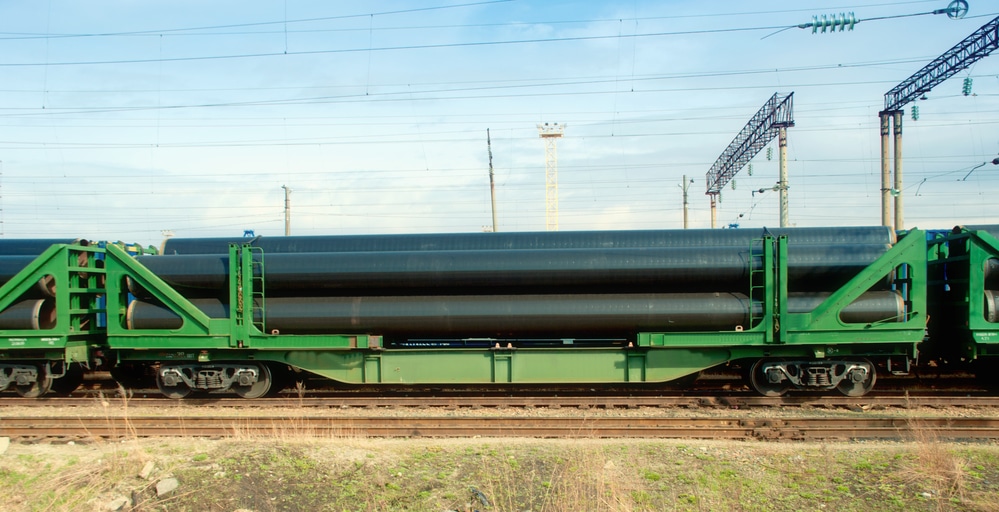
5. Flatcar
Flatcars haul long and tall-sized items that are too big for other types of rail cars.
Other names for this freight are hi-wide shipments or dimensional loads. This includes construction pipes, military equipment, heavy machinery, and beams.
The usage of flatcars took off after World War II. It was also called the “piggyback revolution”.
Flatcars are exactly what their name implies: flat. Flatcars have a horizontal-leveled deck or platform that is placed on two wheels.
These decks either have tie-downs or stakes for securing items. And unlike most rail cars, flatcars are completely open. They don’t have any roofs or walls.
There are also different types of flatcars for specialized dimensional loads:
- Plan flatcars – Span from 60-89 feet in size. Mostly used for steel beams and plates.
- 89-foot pipe flatcar – 89 feet in size. Used for hauling rail and ship pipes.
- 89-foot long flatcar – Mainly hauls machinery and vehicles such as tractors.
- Specialized flatcar – Span from 60-62 feet in size. This usually hauls wood. They can also have vertical walls and stakes.
- Bulkhead flatcar – Mosty hauls logs and ship poles. This type of flatcar also has built-in steel stakes for easier securing.
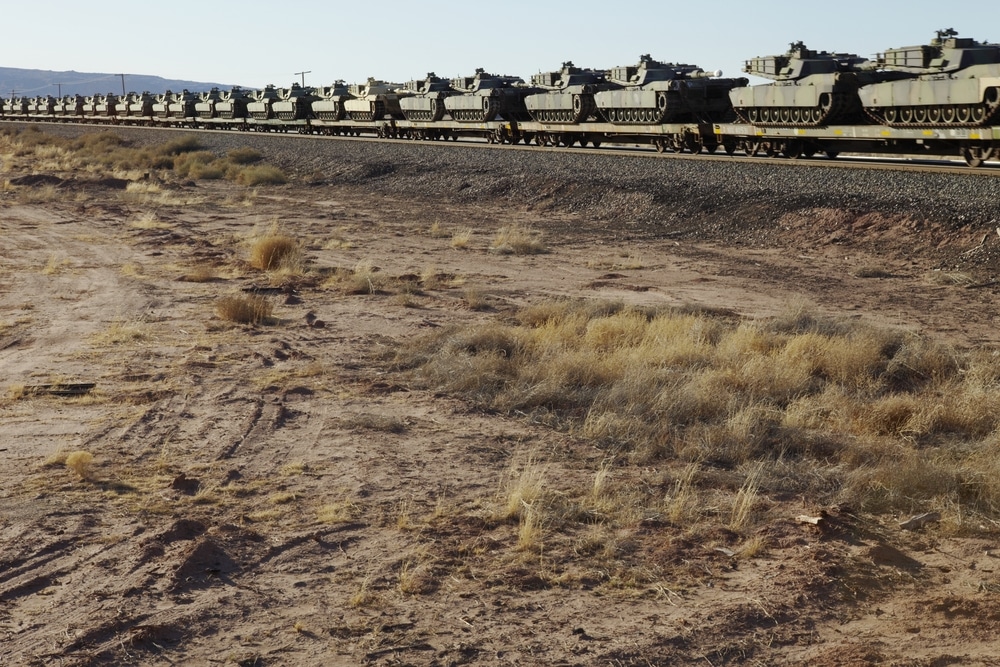
6. Gondola
You might be thinking about a peaceful ride down the Grand Canal. But, this isn’t what the Gondola means in the railroad industry.
Gondolas are another multifunctional and versatile rail car. They haul a wide variety of heavy bulk construction-related materials.
This can span from sand to scrap metals to rebars and aggregates.
The gondola is a strong rail car with an open roof and low walls. It’s like a boxcar cut in half if you can imagine.
There are two types of Gondola rail cars:
- Bathtub-sized gondola – This can haul anything that isn’t easily damaged by outside elements. Examples include iron ore or scrap metal.
- Side-dump gondola – Hauls bulk commodifies that get unloaded with a rotary dumper. This includes sand or gravel.
Gondolas also have a straightforward structure for easy loading.
It can be unloaded using a crane, backhoe, steel, or magnet.
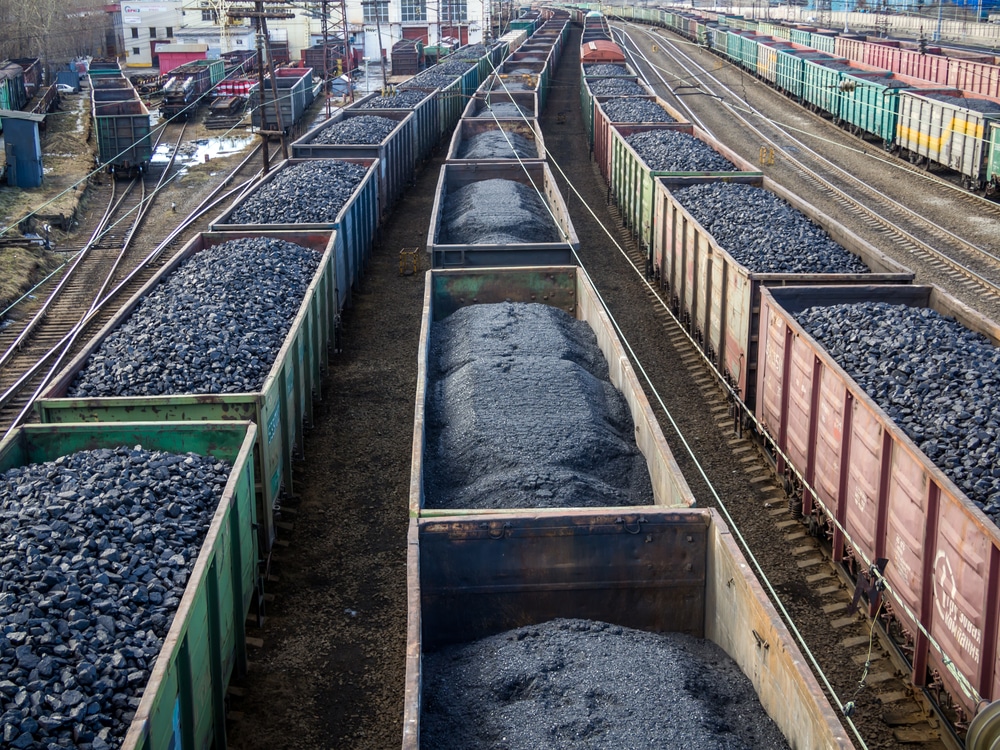
7. Intermodal Equipment
Intermodal is among the most configurable and versatile rail infrastructures, It’s also one of the top rail freight services today.
This is mainly because intermodal containers can haul on both trucks and trains and they can also go onto cargo ships for international shipping.
Also, importantly, they can switch between any of these options without reloading.
And that’s why it’s named intermodal equipment. It can transfer across different kinds of transportation methods.
On top of that, intermodal containers are also versatile when it comes to what they carry.
They can haul anything from consumer goods to food and grain. For this reason, there are also different types of containers and equipment.
There are two main types of intermodal containers: international and domestic. International containers transfer from trucks, ships, and trains. These span from 20-40 feet in size.
On the other hand, domestic containers are approximately 50 feet. While they’re called “domestic” containers, the goods inside the container can contain overseas items.
Intermodal equipment also falls into four categories:
- Containers
- Tanks
- Trailers
- Chassis
The main difference between these is how they’re shipped.
They also differ in hauled goods. For instance, intermodal tanks can contain liquids too.
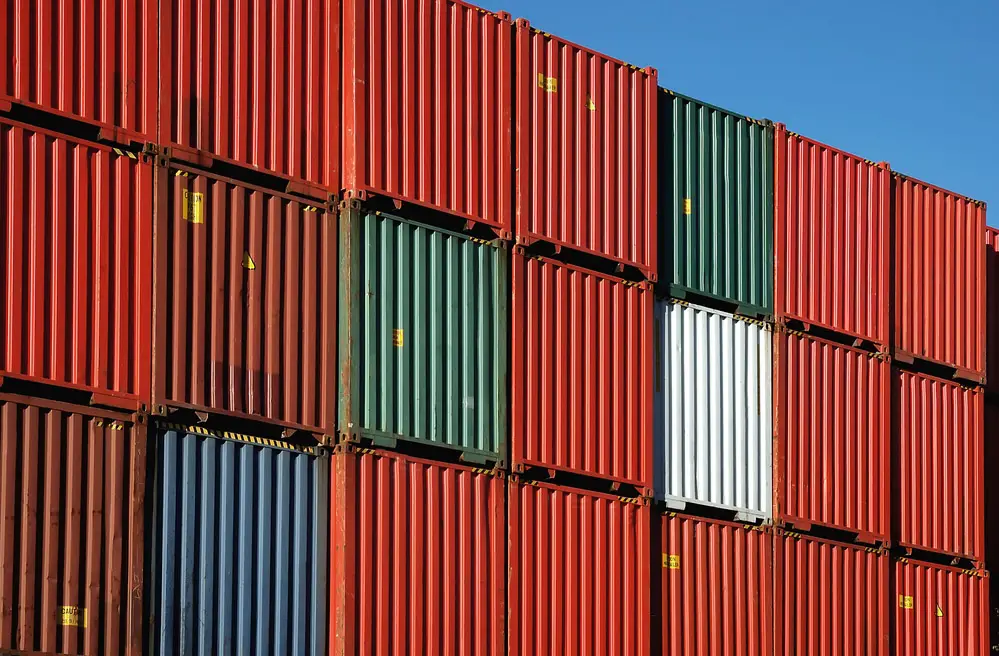
9. Open-Top Hopper
Another hopper-type rail car in this list is the open-top hopper.
This perhaps has the most straightforward design out of all the rail cars.
They’re specially built for easy loading.
As you might expect, they look like their covered counterpart, the covered hopper.
They look like it in every way except for one key detail: the roof.
Its interior has divided bays, which can also load and unload separately.
Each bay also has its corresponding chute for offloading.
Open-top hoppers don’t haul any element-sensitive items, that’s why they don’t have roofs.
These rail cars haul the following items:
- Coal
- Wood chips
- Shale
- Rock
- Ballast
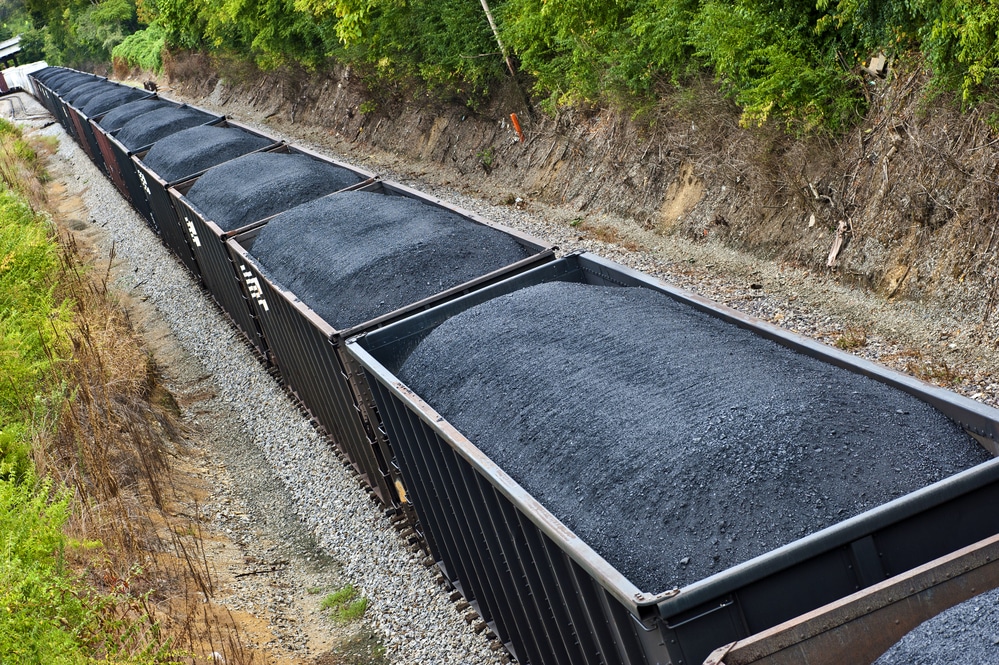
10. Tank Car
A tank car carries liquid or compressed goods. This includes fuel, chemicals, water, and the like.
Many substances like ethanol or fuel, for instance, fall under hazardous substances or hazmat. Consequently, tank cars feature exceptionally durable and well-considered designs.
They also contain monitoring technology for rail and rail cars. Moreover, staff transporting tanker vehicles need first response training.
Tank cars are among the safest means of transporting hazardous goods. In fact, 99% of yearly rail-transported hazmat gets delivered without accidents.
Tank cars get their name from the shape of their bodies. The cars consist of enormous tanks, which are what hold the fluid.
These are cylindrical or barrel-like in shape.
Moreover, there are two types of tank cars for rail transport:
- Nonpressurized – Built for transporting any kind of liquid. These liquids can span from consumables to toxic chemicals. Most of these tank cars include an interior lining, especially suitable for hauled goods. There are also non-pressurized tank cars with built-in insulators and thermal barriers.
- Pressurized – These tank cars have regulators for compressed gas. Examples of these are chlorine and LPG. Due to this, these tanks also have larger steeled walls with added protection.
The pressurized tank vehicles have shielded housing for their valves. This allows for safe loading.
And as you might expect, this requires a lot of extreme safety precautions.
Rail freight companies should adhere to regulations by the AAR and other programs.
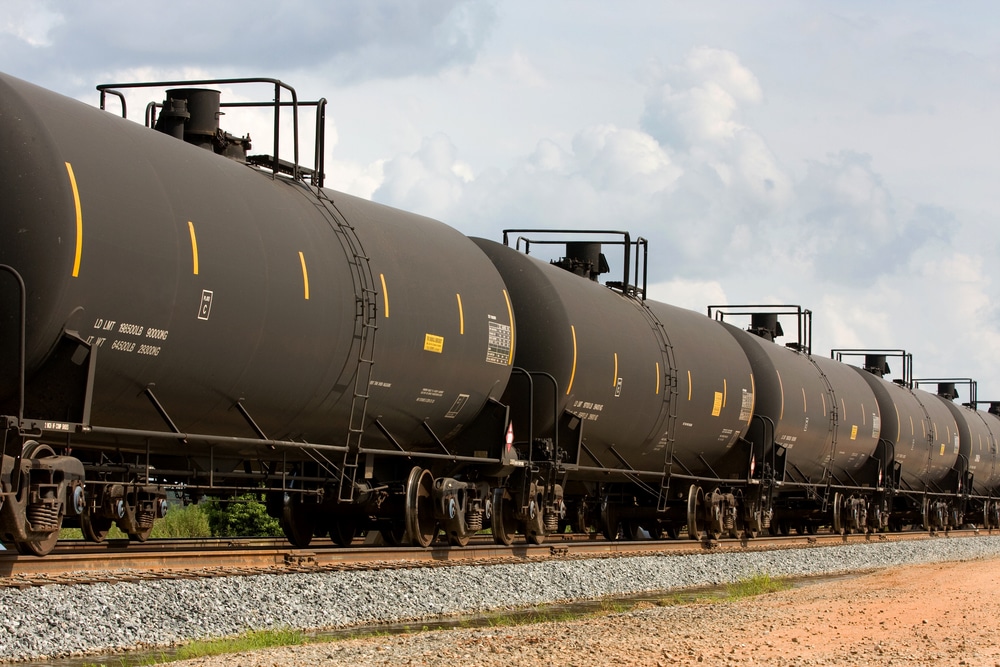
11. Well Car
Well cars primarily carry intermodal containers and they are also commonly referred to as well wagons.
Shipping containers in themselves can carry many different goods, therefore, a well car can also transport almost anything.
These rail cars somehow look like flatcars. However, they have a well-like dip in between their trucks.
This allows the well car to carry the containers lower and stack the shipping containers.
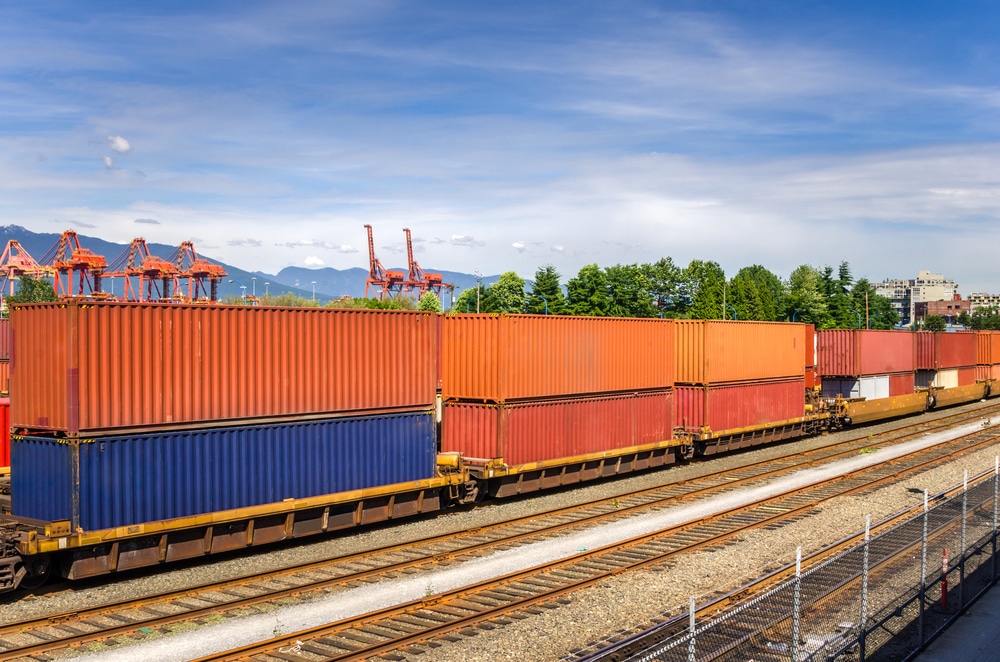
What Do Trains Haul: Final Thoughts
Trains are mostly known for passenger transportation. But, freight trains are bigger than one can expect, as you can see.
Trains can haul virtually anything! They can haul vehicles, food, construction materials, and even gas.
And there’s a specific rail car for every kind of item.
They definitely play a huge role in our day-to-day life and hopefully, now you have a better of what trains haul.

